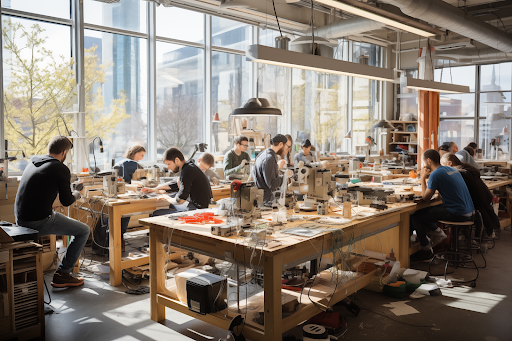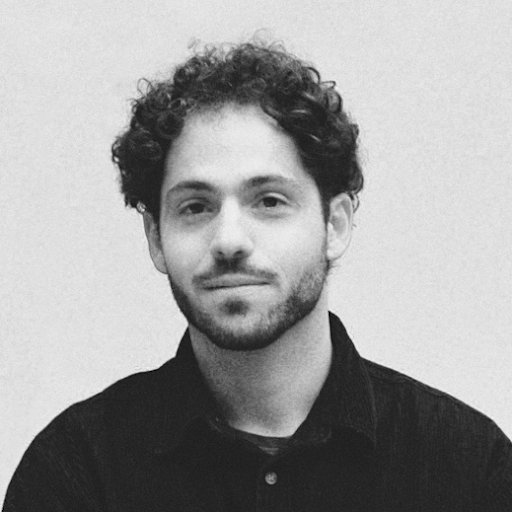Syllabus⇝
This introductory course provides a hands-on overview of integrating AI technology into physical objects through embedded systems. Students will explore basic microcontroller programming (ESP32) and AI services to create a simple interactive object. The course introduces REST API concepts, voice interfaces, and basic hardware integration, demonstrating how AI can be embedded in everyday objects while considering ethical implications. The course also explore how different AIs can be chained together in a multimodal fashion.
Keywords: Embedded AI, Physical Computing, Human-Machine Interaction
Learning Objectives⇝
- Students will understand the basic concepts of embedding AI systems using microcontrollers and web services
- Students will play with existing tools (provided by the teachers) to get familiar with the concept of AI chaining and multimodal inputs
- Students will gain introductory experience with REST APIs and basic I/O interfaces (audio, simple actuators)
- Students will be exposed to the ethical considerations of embedding AI in consumer objects
- Students will complete a basic implementation of voice interface and LLM integration
- Students will grasp fundamental concepts of modular system design
Structure and Phases (Schedule)⇝
The course unfolds across three intensive 3-hour sessions.
Day 1 (3 hours) opens with an introduction and portfolio presentation, followed by an exploration of fundamental AI concepts. Students then survey the current landscape of AI technologies, examining various input and output modalities. The day concludes with hands-on mini-workshops focusing on AI camera applications and the modmatrix multimodal AI tool.
Day 2 (3 hours) is dedicated to technical implementation, beginning with the setup of coding environments and ESP32 hardware configuration. Students then learn REST API fundamentals and network communication protocols, working through practical examples using the Python library. The session concludes with students drafting their deliverable concepts.
Day 3 (3 hours) provides dedicated time for students to develop their projects with instructor guidance, culminating in final presentations where students demonstrate their working prototypes.
Methodological Strategies⇝
Teaching Methods:
- Guided workshops
- Technical demonstrations
- Simple hands-on exercises
Learning Approaches:
- Practical experimentation
- Following example implementations
- Group discussion
Deliverables⇝
- Basic working prototype using the provided boilerplate
- Brief technical documentation
- Short presentation of working prototype
Grading Method⇝
| Percentage | Description |
|---|---|
| 50% | Working Prototype - Summative |
| 25% | Class Participation - Formative |
| 25% | Final Presentation - Summative |
European Credit Transfer and Accumulation System (ECTS)
2 ECTS
Additional Resources⇝
- https://www.amazon.com/RESTful-Web-APIs-Leonard-Richardson/dp/1449358063
- https://www.amazon.com/Ethics-Artificial-Intelligence-S-Matthew-Liao/dp/0190905034
- https://www.amazon.com/Designing-Voice-User-Interfaces-Conversational/dp/1491955414/136-6019855-3033806?content-id=amzn1.sym.fc475966-e837-48fc-9ed0-f4ca6ae9337b
- https://en.wikipedia.org/wiki/The_Design_of_Everyday_Things
Faculty⇝
Christian Ernst is a creative technologist with a background in UX design. After finishing degrees at Berlin University of Applied Sciences (HTW), he studied the Master of Design for Emergent Futures at the Institute of Advanced Architecture of Catalonia and subsequently at ELISAVA Barcelona. Through his speculative practice he approaches technology critically and question it through different lenses. Projects are ranging from technological investigation into AI to speculative furniture design and multimedia installations. His works and live in Barcelona.
Pietro Rustici is a computer scientist with a background in robotics and design. After finishing degrees at Delft University of Technology (TU), he studied the Master of Design for Emergent Futures at the Institute of Advanced Architecture of Catalonia and subsequently at ELISAVA Barcelona. Through the speculative practice his approach technology critically and question it through different lenses. Projects are ranging from technological investigation into AI to speculative furniture design and multimedia installations. He works and live in Barcelona.


